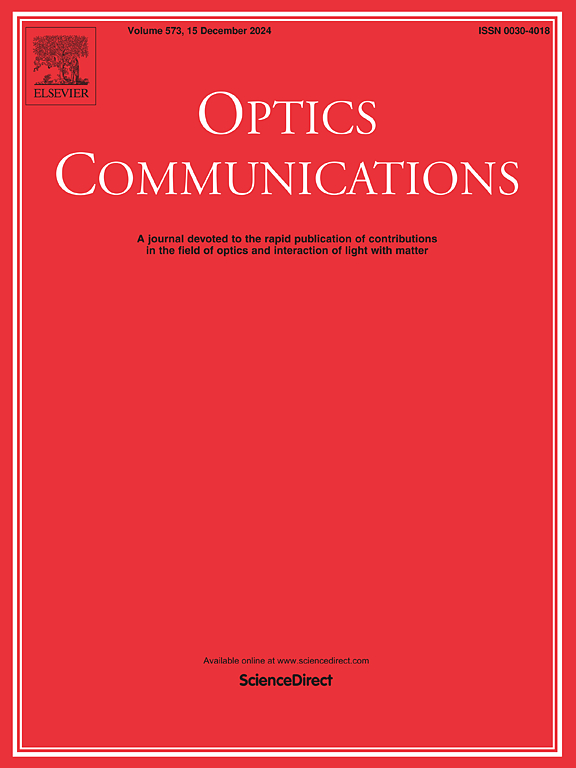Dual-wavelength and dual-linear polarized omnidirectional beam deflectors
IF 2.2
3区 物理与天体物理
Q2 OPTICS
引用次数: 0
Abstract
Multifunctional metasurfaces have recently attracted great research interest in the field of integrated optics, which are the base of realizing device integration and miniaturization. The dual-wavelength and dual-linear polarized omnidirectional beam deflectors are proposed, in which each nanobrick plays a positive role for two incident light with different wavelengths and polarization states. Two kinds of dual-wavelength and dual-linear polarized omnidirectional beam deflectors with the same and different two-dimensional phase gradients have been designed and investigated. Under the incidences of 532 nm x-linear polarized (XLP) and 633 nm y-linear polarized (YLP) light, two beam deflectors can achieve deflection not only in presupposed perpendicular planes, but also in any plane with arbitrary azimuthal angles (α), so it is called achieving omnidirectional deflection. And the omnidirectional refractions are based on design of phase gradients along any orientations of the metasurface. The uniqueness of these beam deflectors makes this design philosophy very attractive for applications in omnidirectional steering, polarization detection, information processing systems and multi-imaging systems.
求助全文
约1分钟内获得全文
求助全文
来源期刊

Optics Communications
物理-光学
CiteScore
5.10
自引率
8.30%
发文量
681
审稿时长
38 days
期刊介绍:
Optics Communications invites original and timely contributions containing new results in various fields of optics and photonics. The journal considers theoretical and experimental research in areas ranging from the fundamental properties of light to technological applications. Topics covered include classical and quantum optics, optical physics and light-matter interactions, lasers, imaging, guided-wave optics and optical information processing. Manuscripts should offer clear evidence of novelty and significance. Papers concentrating on mathematical and computational issues, with limited connection to optics, are not suitable for publication in the Journal. Similarly, small technical advances, or papers concerned only with engineering applications or issues of materials science fall outside the journal scope.
 求助内容:
求助内容: 应助结果提醒方式:
应助结果提醒方式:


